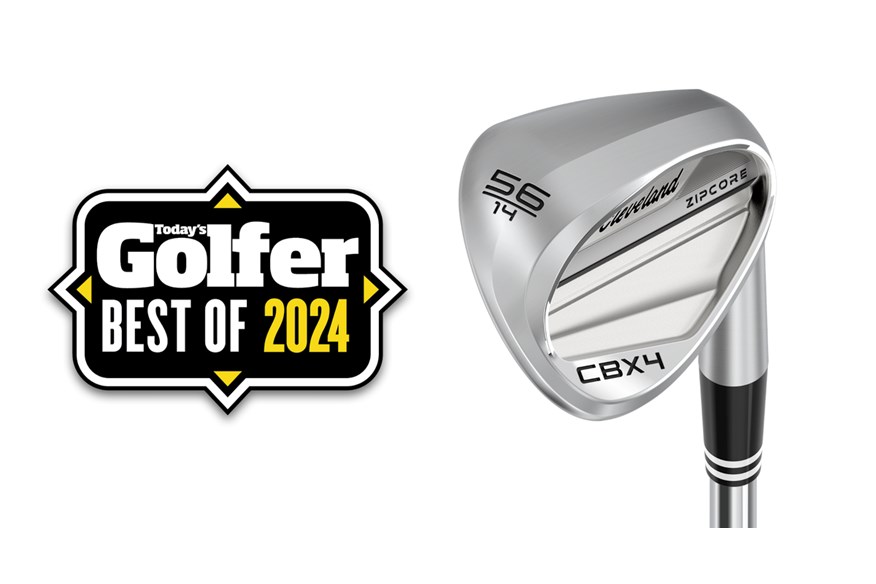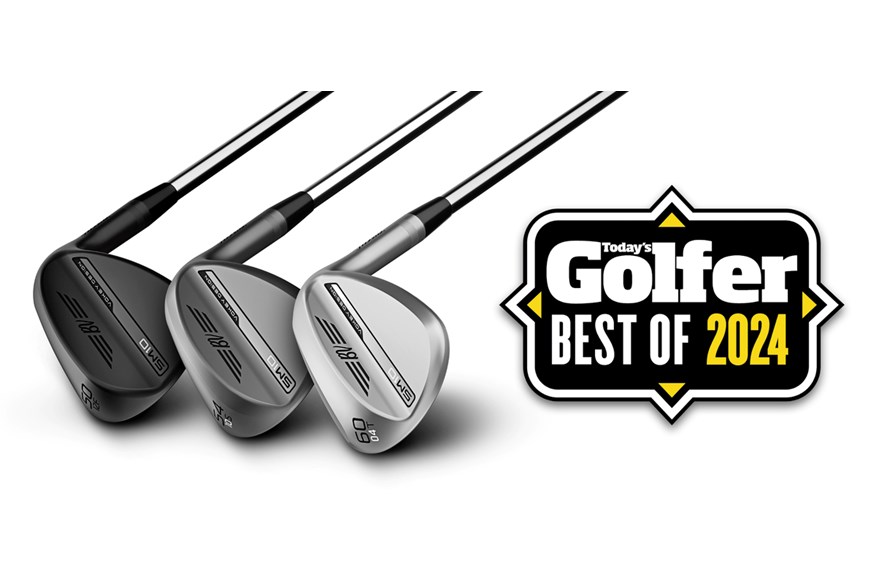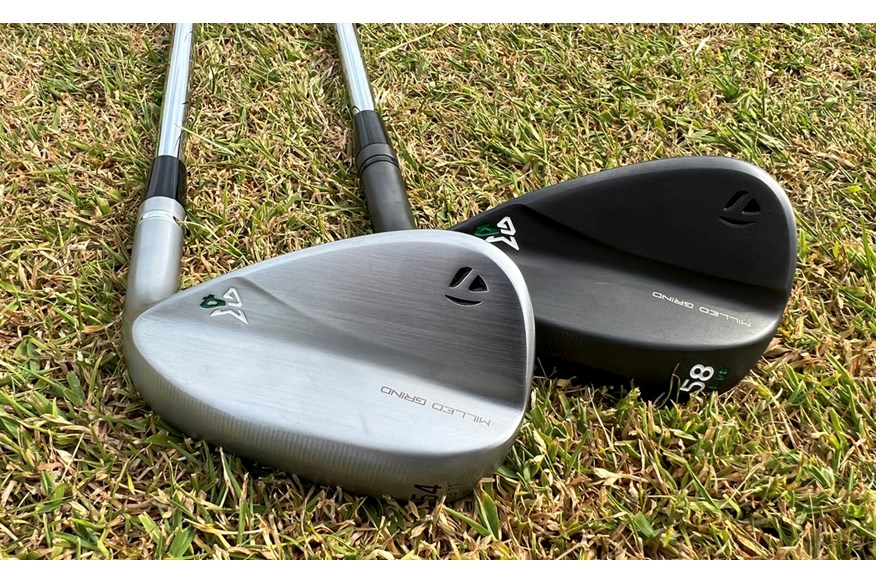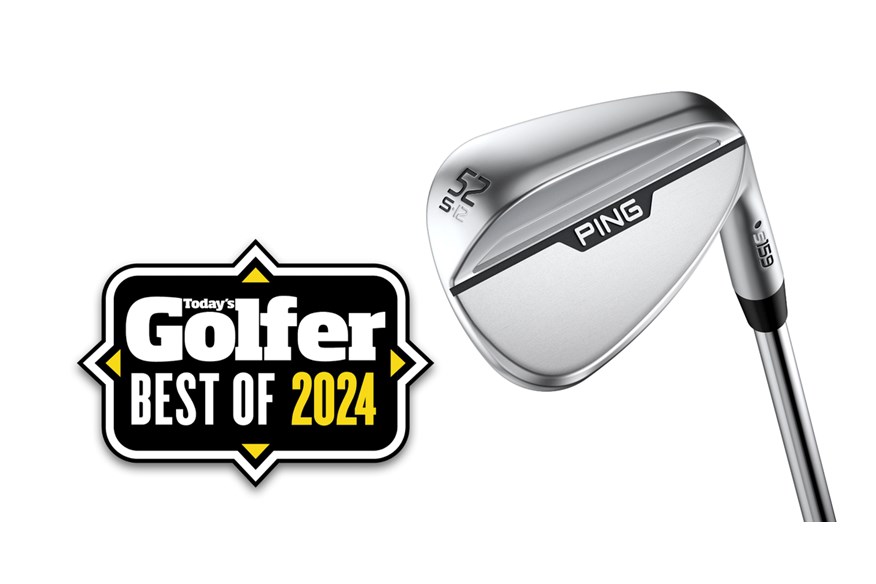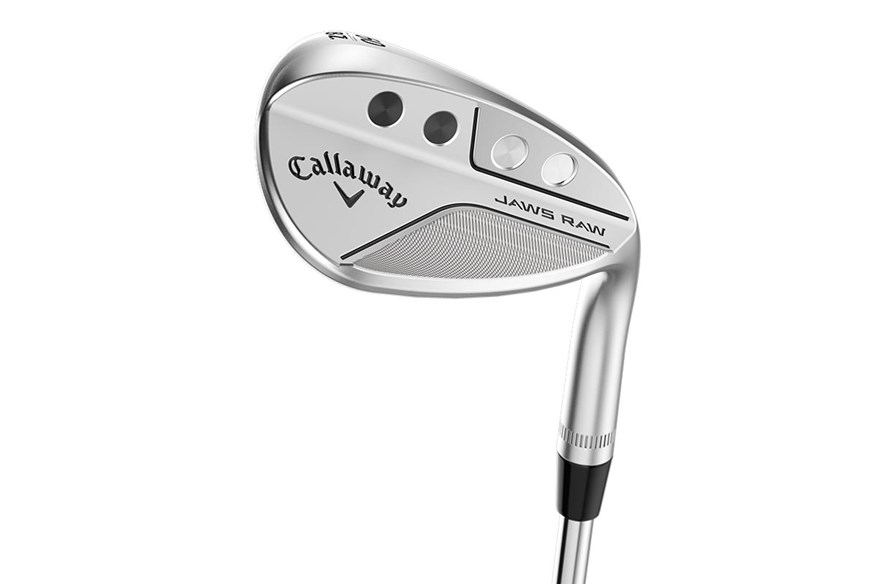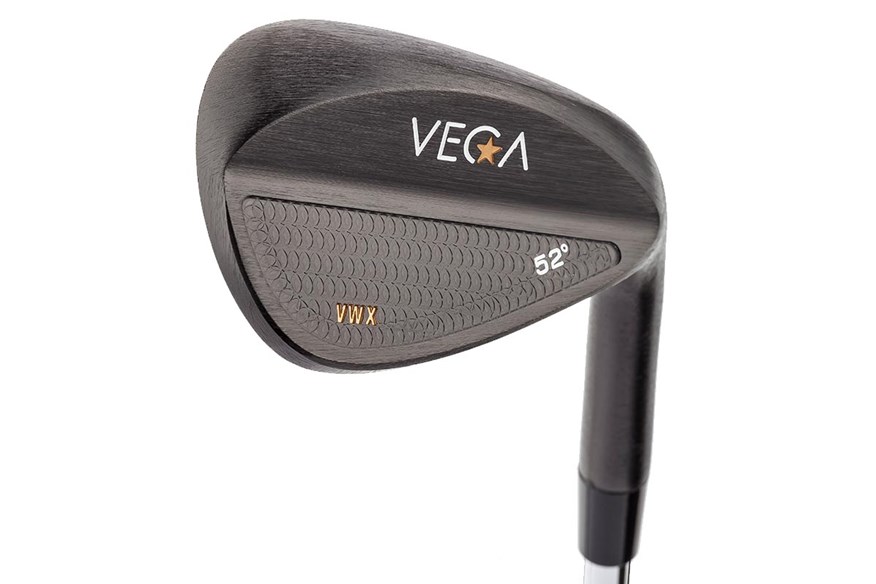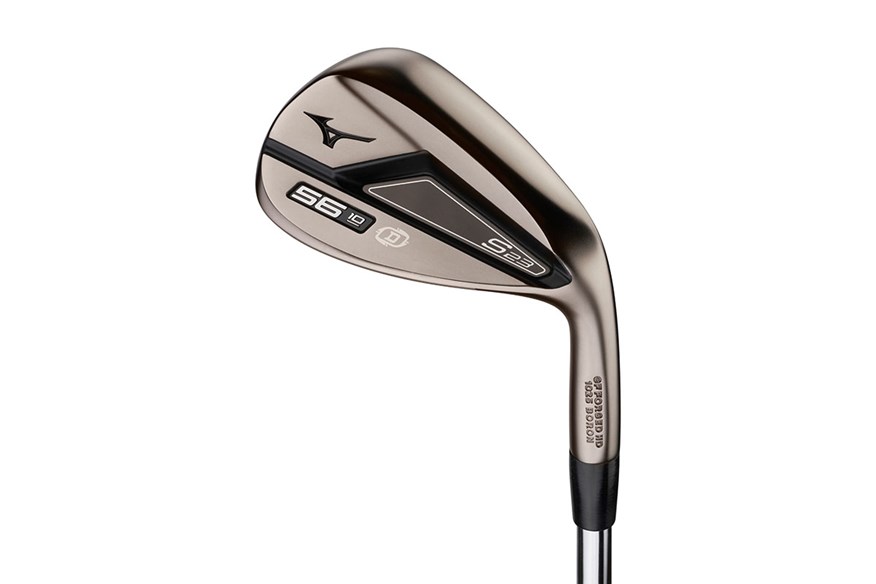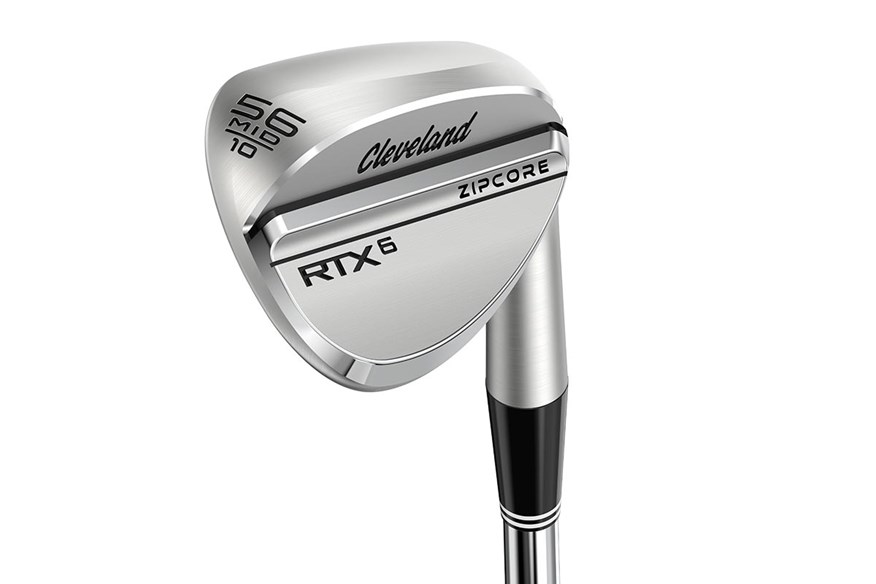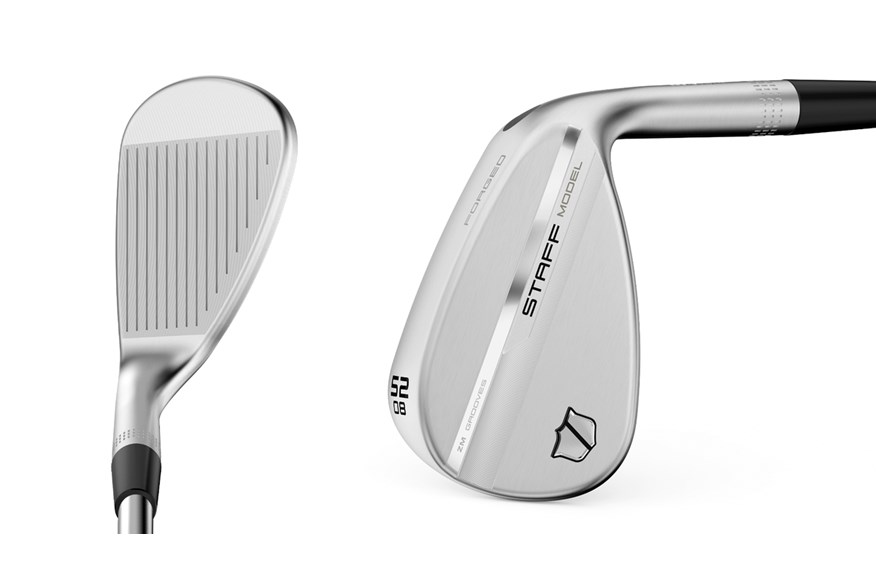From Bunker to Birdie: Upgrade your short game with the Best Golf Wedges in 2025
Last updated:
What are the best golf wedges in 2025? Our in-depth test identifies the perfect short-game clubs for your game.
JUMP TO:
– Best Wedges 2025
– The Data
– Buying Guide
– How We Tested
Your golf bag wouldn’t be complete without them, yet the importance of selecting the best golf wedges often flies under the radar for many players. It’s common for golfers to base their wedge choice solely on aesthetics or stick with a brand that matches their irons. However, the reality is that numerous factors demand consideration.
Navigating through the myriad of shapes, sizes, grooves, bounces, and grinds available in wedges can feel like traversing a minefield. But fear not, as we’re here to simplify the process with our expert buying advice and rigorous testing. Whether you’re a seasoned pro or just starting out, our guide caters to golfers of all abilities seeking the ideal wedge for their game.
Our comprehensive testing involved putting 26 of the top golf wedges through their paces on a launch monitor, ensuring the utmost precision in identifying the perfect model for your needs in 2025. Plus, if you’re eyeing a wedge with plenty of loft, delve into our recommendations for the best lob wedges. And if you’re considering upgrading your irons and wedges simultaneously to fine-tune your yardage gaps, don’t miss our evaluation of the top golf irons.
Best golf wedges at a glance:
Best for depth of choice: Titleist Vokey SM10 Golf Wedge | VIEW US OFFER
Best for forgiveness: Cleveland CBX 4 Golf Wedge | VIEW US OFFER
Best looking: Ping S159 Golf Wedge | VIEW US OFFER
Whether it’s executing precise approach shots or delicate greenside pitches, having wedges that complement your irons can significantly elevate your game. Our guide not only highlights standout wedge options but also provides insights into how they integrate with your existing club setup, empowering you to make informed decisions tailored to your playing style and preferences.
Best Golf Wedges: Buying Guide
What lofts should I choose for my wedges?
Choosing lofts can be confusing. We’d recommend a fitting session, as with the help of a launch monitor and fitter you will get a better understanding of the job each wedge performs.
If you insist on going it alone, you won’t go too far wrong by owning a gap wedge (possibly a 46-52° loft) for shorter approaches, a sand wedge (54-56°) with a decent amount of bounce to use primarily from sand, and a lob wedge (58-60°) for short, high lofted, soft landing escape shots around the green.
If you can get a higher-lofted wedge to perform from sand and also do the job of a lob wedge, you get away with needing just two wedges rather than three.
With pitching wedge lofts typically sitting in the mid to low 40s it’s important to understand your lowest iron’s loft. If you updated your irons not too long ago then unaware to you, it may have created a substantial gap in your clubs, which can mean a big difference in yardage. The ideal gap between clubs would be 4°, potentially up to 6° at a push.
How many wedges should I have?
Most golfers will carry between two and four wedges. Four wedges in the bag gives you more options when it comes to shots into and around the green, but not every golfer necessarily needs four wedges. Three wedges is quite a common option and leave extra room for a fairway wood or hybrid at the top of the bag.
The most important thing for you to do is decide where you require the extra clubs. Look at where you have the biggest gaps, is it at the top or bottom end of the bag? Often golfers will not need more than three wedges and they’re a much easier club to sacrifice than a club which will help you hit the ball further like a hybrid.
Should I choose a cavity back or a blade wedge?
The terms ‘cavity back’ and ‘blade’ refer to the shape and design of the clubhead. The designs offer distinctly different characteristics that impact the performance of golfers at varying skill levels. Beginners and high handicappers may benefit from the more forgiving and easier-to-use cavity back in comparison the the more advanced player wanting the precision and workability of a blade.
It’s not always about skill level though. If you play golf at a course that has firm and fast greens you may prefer to go with the blade which is better for controlling spin. Golfers may also opt for the best of both worlds, having low-lofted cavity back wedges and high-lofted bladed wedges to balance forgiveness and precision.
What finish should you get?
When a wedge has completed production it will have a coating or treatment added to the head, this is what’s referred to as the finish. The decision on what finish to choose is mainly personal preference and what suits your eye better.
Be warned, all finishes will wear over time no matter what style you pick. The darker finishes are one of the most popular on the market but over time they can show the worst signs of wear. If you’d like to maintain the color and appearance of your wedges longer, then a chrome or nickel finish would be better.
There is one finish that may help slightly with spin and that is the raw finish. The oxidized club face is likely to create more friction when in contact with the ball. Raw finishes are designed to wear and rust more over time but are certainly a must-avoid if you hate the sight of a rusty clubhead.
Best Golf Wedges 2025
The CBX 4 is brand new for 2024 and my thinking absolutely hasn’t changed from its predecessor. We don’t suddenly become tour pros’ when pulling a wedge from the bag. So, if you’re looking for maximum wedge efficiency, forgiveness, and consistency you simply have to ask yourself if you can accept cavity back wedges in 2025. If you can the CBX4 is the best money can buy.
As far as test data goes the CBX 4 is a top performer for many reasons. Yes, the model’s beautifully CNC-milled and laser-etched face produced 1.7% more backspin than our test average but much more importantly that spin was consistent. The drop-off between our test pro’s highest and lowest spinning shots was 949 RPM, that is 45.4% tighter than our test average and 3rd best across the entire 20 different 52° wedges we hit this year. Throw in a carry distance drop-off of 9 yards (that’s the longest to shortest shots) from 100 yards out and a shot area smaller than our test average and you soon realize this is a top-performing wedge for numbers.
The CBX’s beauty doesn’t just lie in numbers though. This is a seriously good-looking and feeling wedge, it’s beautifully finished and now in its fourth generation, it also feels like the model has blossomed and come of age too. My thinking is many golfers at address won’t be able to spot the differences between its slightly larger head and the tour-level Cleveland RTX 6. The icing on the cake apart from the slightly lower price, is the ton of loft choices, but also the lack of sole grind or bounce options as Cleveland just make this model in the specs best suited to its target audience. A move that takes a ton of hassle and confusion out of buying new wedges.
Read our full Cleveland CBX 4 wedge review
Pros
- Extremely forgiving
- Brilliant for club golfers who use cavity back irons
- Sole grind and bounce choices are simplified by loft
Cons
- Head may be a little large for some
It's really hard to say the SM10 is massively better than the previous SM9, I don’t believe they are but if I were spending my own money on new tour-level wedges in 2025 I would absolutely have the SM10’s on my radar. I love the head shapes, they’re so simple and unfussy, with the leading edges being quite straight in the lower lofts and slightly more sculpted in the higher lofts which gives the impression of playability and versatility right where you need it most. I also like the idea that Titleist are comfortable and content with just making really good wedges. Unlike most of the competition, the SM10s don’t come with fancy full-face grooves, modern high-toe shaping, or the promise of a lightweight heel pad removing inefficient mass. In a world where almost every other brand is trying to sell you tech-laden wedges, Vokey are happy just doing what they’ve done for years, which is making a really good standard of wedge with mass market appeal.
Our test data doesn’t highlight the SM10’s as outstanding spreadsheet performers, in fact, a lot of the numbers we created were right on or hovering around our test averages. But I wouldn’t let that get in the way of me buying into Vokey wedges, as in my eyes the SM10’s are some of the best feeling, most desirable, and versatile wedges out there. If you’re spending this sort on money make sure you go and get fitted, and utilize the new Titleist wedge app to determine your ultimate set-up. If you’re looking for a finish recommendation the new matte Nickel is out of this world good.
Read our full Titleist Vokey SM10 wedge review
Pros
- The range of options is second to none
- Your short game benefits from the input of some of the best wedge players in the game.
- The feel and feedback are superb
Cons
- If you're buying a set the costs soon rack up
If you’re the type of golfer who just wants a brilliant traditionally shaped wedge with a familiar groove pattern, and your game will benefit from a ton of loft, sole grind, and finish options the MG4’s will be right up your street. In my book, if you see the MG4 as a Titleist Vokey SM10 alternative you are thinking exactly along the right lines.
From what I’ve seen I can’t say the MG4 will ensure you’ll see no spin difference between wet and dry conditions, as my 2023 Wet Wedge Test highlighted how the model generated 30% less backspin in damp conditions. This however is often the case with many leading wedges.
Golfers who love very straight leading-edge wedges though will adore the MG4 lower lofts, they’re just about the straightest I’ve seen. Be prepared for them though to get progressively more rounded as lofts increase.
We all want to know we’re buying the right equipment when we splash the cash and if you’re looking for data to confirm your tour-level wedge choice the MG4’s definitely won’t let you down.
The model was one of only three wedges in 2024 to create more than 8000 RPM backspin in the hands of our test pro. With 8003 RPM the MG4 created 4.4% more spin than our test average, which warranted a seriously impressive third-best performance among the 20 models (at 52° test loft) tested. Throw in a smaller/tighter carry distance drop-off and shot area performance than our test averages and you can absolutely understand why the MG4 ranks among my four best performing wedges of 2025.
Read our full TaylorMade MG4 wedge review
Pros
- The MG4's are beautifully shaped
- Dropping virtually no spin in wet conditions is a massive plus for shot predictability
- Expect additional feel over previous generations
Cons
- You will get a fraction more spin from the TaylorMade Hi-Toe 3 wedges
Throughout their life span, and there were more than four generations, the previous Glide family never quite hit the spot with us here at TG. Even though the company talked up their brilliant Hydrophobic finish tech, which neutralized the effects of damp conditions reducing spin, their blade lengths tended to be a little long and often to my eye looked a little clunky. That’s all changed with the brilliant new S159 in 2024.
If your game can justify buying into tour-level wedges the S159s are one of the best-shaped and most desirable wedges I’ve seen this year. Our test numbers are pretty impressive too. With a backspin rating 300 RPM above our test average, the S159 can get approaches zipping across the dancefloor. The model also posted the lowest backspin drop-off of all 20 (52° lofts) wedges hit which means you can expect good shot-to-shot spin consistency and predictability too, which of course will ultimately lead to lower scores.
Make sure you take Ping up on the opportunity to get properly fitted as there’s a good selection of sole grinds, lofts, and shaft options to dial into your perfect set-up.
Read our full Ping S159 wedge review
Pros
- Very consistent spin numbers
- Sleek looks
- Nice feel
Cons
- Only two finishes are available
- Less forgiving than some wedges
I’m a big fan of how the Raw rusts only on the club face. It means the model is anti-glare in bright sunlight, and if you believe rusty faces help grab and grip shots into spinning more (there’s a ton of debate around the subject) you get additional performance and a wedge that doesn’t immediately look old and worn out.
With a backspin average of 7408 RPM, the Raw didn’t rip up any trees in terms of stopping power in my 2024 test. However, it did hit shots into an area 57% tighter than our test average, which warranted a third-best dispersion ranking overall. With some seriously good new wedge competition on the market in 2025 the Raw remains a very tidy choice, even if it’s pretty pricey.
Read our full Callaway JAWS wedge review
Pros
- No glare in bright sunlight
- Sharp leading edge is good from tight lie
Cons
- Could dig in soft conditions
Before we get too carried away you will need to put a premium on Japanese forging to warrant buying in, as a set of three will set you back a hefty £747. If you do, expect a very sharp-edged wedge with a slightly higher heel shape from what is an excellent tour-level model. After hitting the 52° from short and longer range I believe the VWX will work best in the hands of reasonably confident short gamers, as the head is pretty compact and less forgiving than some of the competition. With a limited run of lofts make sure your game fits this model perfectly before splashing out.
Pros
- Incredible spin rate
- High flight
- Nice design
Cons
- Limited options
- Not the most forgiving


Rrp: $136.99
I love that the heads have been designed in conjunction with Bernhard Langer and unlike most modern wedges it’s forged not cast. Interestingly Langer likes to see offset in his wedges (a feature Nick Faldo has looked for in his pomp) as he feels it helps encourage hitting down on the ball and promotes keeping the hands ahead of the leading edge, which he believes helps improve consistency.
Irrespective of why the Wingman is designed this way there is zero doubt in mind this model represents excellent value for money. To my eye, the constant offset heads, which position the leading edge slightly further back and more in line with the hosel give the impression it’s easy to hit down onto the ball and slip the head under the ball for shorter more delicate approaches. I also loved the impact feel, sound, and feedback too.
At 7982 RPM our test data has the Wingman down as our fifth-highest spinning wedge in 2025, the backspin drop-off was also smaller than our test average. So, golfers should expect good shot-to-shot spin consistency out on the golf course. Before you get too carried and order online make sure you take a look at the heads in the real world. The offset does give a slightly different appearance at address, but to me, it’s not distracting at all, which means the Wingman is a steal at $139/£139 in 2025.
Read our full Tour Edge Wingman wedge review
Pros
- These are very keenly priced, but tech-laden forged wedges
- There's plenty of fitting opportunity to ensure you get the perfect wedge setup for your game
- I really like the leading-edge shape
Cons
- You will need to like or accept the offset look
Our test data completely supports Mizuno’s thinking too. The model was our fourth-highest spinning wedge of 2024 which should at least highlight the S23 as a force to be reckoned with. It wasn’t finished there though. Throw in a tied first for smallest carry distance drop-off (6 yards tied with the Mizuno T24 and More MOD 1) and the tightest shot area of all 20 (52° samples) wedges hit and you’ve got a seriously good performing model on your hands.
Before we all go bleary-eyed and gooey for the S23, I do need to point out that at £185 a pop this is one of the most expensive mainstream wedge families you can buy into in 2025. The product is also heading into its second year on the shelf, which says to me it’s a good option, but with the model likely to be replaced towards to the end of 2025 the attractiveness of a £555 three wedge set dims slightly.
Read our full Mizuno S23 wedge review
Our test data has the ZipCore hovering at 300 RPM above average levels of backspin in 2024, but with so many factors to consider when buying new wedges, it’s worth remembering you should never just pick the highest spinning model. What’s much more important, is having a full range of lofts, bounce or sole grind options, and the ability to choose a finish that suits your eye, as you have to love your wedges if you’re ever going to get the best out of them on the golf course. And options are where Cleveland utterly excel.
From 100 yards out our test pro’s shots had a 9-yard drop-off (from longest to shortest) and 4.9-yard left to right dispersion, which gave a shot area 37% tighter dispersion than our test average. In anybody’s book that’s cracking accuracy performance. If you’re happy looking at full-face grooves there’s also a new RTX 6 Full-face model just for you this year, where this standard model now heads into its second year of product cycle.
Read our full Cleveland RTX 6 ZipCore wedge review
Pros
- Great range of options
- Very forgiving
- Supremely accurate
Cons
- Slightly low spin
Our test pro thought the Staff Model ZM sat really nicely at address likening the profile to almost having a Mizuno T-type compact high-toe shape about it. Wilson were adamant when I spoke to them that the new ZM grooves turned this new model into a serious spin machine, although they didn’t offer any reasoning on why the ZM grooves were so effective. Unfortunately, the statement wasn’t quite supported by our test results.
As lovely, attractive, and desirable as the ZM’s are there’s no covering up the model struggled to better our test averages for any single metric. In my eyes that need not be a deal breaker as buying wedges is all about feel, reliability, and confidence, and the ZM certainly gave our test team those traits in abundance.
My gut feeling is as nice as the Staff Model wedges are they are going to be sought out predominantly by Wilson fans and the owners of Wilson forged irons, much more so than golfers just looking for new wedges in 2025. If that’s you I don’t reckon you’ll be disappointed, hence why the model features among my top 10 wedges of 2025.
Read our full Wilson Staff Model ZM wedge review
Pros
- The head shapes have dramatically improved over the previous model
- There's a good selection of loft, bounce, and high-toe options
- A wedge-specific shaft is an excellent addition.
Cons
- So long as you're not brand-led the ZM's are incredibly difficult to fault
Best Golf Wedges: FAQs
How often should you change your wedges?
Changing your wedges is something dependent on a few factors such as how often you play, course condition, groove wear, and your practice habits. Generally, we would recommend golfers look to replace their wedges every 60 to 100 rounds, which for most golfers will give them a two-year life cycle.
Regularly inspecting your wedges for damage and signs of wear along with giving them a good scrub can help the lifetime of a wedge. We would recommend that after 60 rounds or so you should thoroughly inspect your grooves. Ideally, you would test them against a new wedge to see how your spin rate and launch angle have been affected over time.
Are raw or plated wedges best for me?
Raw wedges have grown in popularity as brands have figured out a way for just the face to rust over time. An overwhelming majority of tour players use raw wedges, as they believe they offer a slightly better feel and spin.
Rust alone doesn’t make a wedge spin more; the lack of groove edges being covered (rounded) by the plating process can add additional spin and control. It may only make a small difference, but if you’re after ultimate feel and spin performance, raw wedges have the edge.
What wedge bounce, grind is right for me?
As the name would suggest, it’s the area of the club that helps it bounce off the sand or turf without digging in. A collection of different lofts and bounce angles will allow you to play several different shots. If you’re the type of player who wants to explore sole grinds and bounce, seek out a trusted fitter.
The Vokey Design SM10 wedges, for example, come with six different sole grinds plus low, mid, and high-bounce options, so things can go seriously wrong at this hurdle. Generally, there’s a shift to higher bounce wedges, yet many golfers choose lower bounce models that dig aggressively into the turf.
Do I need different shafts in my wedges to my irons?
On tour, wedges are now regularly fitted with shafts a flex weaker than a player’s irons, as so few shots are hit full-out with a specialty wedge. It makes a lot of sense to think about doing something similar; the idea maximizes feel and stopping power.
With brands such as KBS also now offering four or five different wedge shafts, it’s well worth taking the time to find one that works for you and not just settling for a heavy stock wedge shaft that bears little or no resemblance to your irons.
What’s the most used golf wedge?
This certainly depends on the golfer and their specific game. We’d say that the sand wedge is the club most commonly used at the end of the bag. While the pitching wedge is an essential club in a golfer’s bag and sees frequent use for approach shots from moderate distances, it doesn’t hold the same level of versatility or necessity as the sand wedge in various situations around the golf course.
What’s the easiest golf wedge to hit?
A wedge with a high MOI such as the Callaway CB or Cleveland CBX offer added stability and forgiveness, the cavity-back designs are much easier to hit being similar to an iron.
What are the best wedges to carry?
Though largely a matter of both opinion and skill level, the best golf wedges to ensure you’re carrying are the pitching wedge and the sand wedge. A pitching wedge is great for approach shots from a range of distances right up to the green from the fairway, and a sand wedge is great in various situations around the course, its versatility can get you out of tight spots or get you closer to the hole.
Best Golf Wedges: The Data
Below is the data from our independent testing of the best golf wedges available in 2025. You can read about all the other models that didn’t make our shortlist above in our golf club review pages.
| Model | Loft | Ball Speed | Launch Angle | Backspin | Backspin Drop Off | Height | Descent Angle | Carry Distance | Carry Distance Drop Off | Shot Area |
| Vega VWX | 52° | 78.8 MPH | 24.6° | 8974 RPM (1) | 1212 RPM | 18 YDS | 43.4° | 94 YDS | 11 YDS | 62.7 SQ YDS |
| Ram Tour Grind | 52° | 78.4 MPH | 24.2° | 8402 RPM (2) | 1746 RPM | 17 YDS | 42.3° | 94 YDS | 15 YDS | 64.5 SQ YDS |
| TaylorMade MG4 | 52° | 78.3 MPH | 25.8° | 8003 RPM (3) | 1092 RPM | 19 YDS | 43.9° | 94 YDS | 8 YDS | 60.8 SQ YDS |
| Mizuno S23 | 52° | 81 MPH | 26.1° | 7987 RPM | 1289 RPM | 20 YDS | 45.2° | 99 YDS | 6 YDS (T1) | 23.4 SQ YDS (1) |
| Tour Edge Wingman | 52° | 80.5 MPH | 25.1° | 7982 RPM | 1382 RPM | 19 YDS | 43.9° | 98 YDS | 12 YDS | 100.8 SQ YDS |
| Ping S159 | 52° | 77.5 MPH | 24.9° | 7974 RPM | 791 (1) | 18 YDS | 42.5° | 93 YDS | 12 YDS | 68.4 SQ YDS |
| Cleveland RTX 6 | 52° | 77.4 MPH | 26° | 7911 RPM | 1791 RPM | 18 YDS | 43.7° | 93 YDS | 9 YDS | 44.1 SQ YDS |
| Sub 70 286 Forged Raw | 52° | 77.9 MPH | 25.5° | 7820 RPM | 2339 RPM | 18 YDS | 43.3° | 94 YDS | 7 YDS | 58.8 SQ YDS |
| Cleveland CBX 4 | 52° | 78.4 MPH | 26.5° | 7800 RPM | 949 RPM (3) | 19 YDS | 44.6° | 95 YDS | 9 YDS | 53.1 SQ YDS |
| Bettinardi HLX 5.0 | 52° | 78.5 MPH | 24.3° | 7797 RPM | 2109 RPM | 17 YDS | 42.1° | 95 YDS | 10 YDS | 45 SQ YDS |
| PXG 0311 Sugar Daddy II | 52° | 79.2 MPH | 25.7° | 7741 RPM | 2240 RPM | 19 YDS | 44° | 96 YDS | 10 YDS | 44 SQ YDS |
| Titleist Vokey Design SM10 | 52° | 78.2 MPH | 26° | 7653 RPM | 1926 RPM | 19 YDS | 43.9° | 95 YDS | 15 YDS | 139.5 SQ YDS |
| Vega Alcor | 52° | 79.9 MPH | 25.7° | 7633 RPM | 2006 RPM | 19 YDS | 44.1° | 97 YDS | 9 YDS | 64.8 SQ YDS |
| More MOD 1 | 52° | 79.2 MPH | 25.4° | 7512 RPM | 894 RPM (2) | 19 YDS | 43.4° | 96 YDS | 6 YDS (T1) | 28.8 SQ YDS (2) |
| Callaway Jaws Raw | 52° | 78.9 MPH | 26.3° | 7408 RPM | 2805 RPM | 19 YDS | 44.3° | 96 YDS | 7 YDS | 30.1 SQ YDS (3) |
| Ping Glide Forged Pro | 52° | 78.8 MPH | 26.2° | 7165 RPM | 2246 RPM | 19 YDS | 44° | 96 YDS | 11 YDS | 119.9 SQ YDS |
| Mizuno T24 | 52° | 76.3 MPH | 26.2° | 7059 RPM | 2131 RPM | 18 YDS | 43.1° | 92 YDS | 6 YDS (T1) | 44.4 SQ YDS |
| Wilson Staff Model ZM | 52° | 77.8 MPH | 26.4° | 7003 RPM | 1963 RPM | 19 YDS | 43.8° | 95 YDS | 13 YDS | 81.9 SQ YDS |
| Callaway CB | 52° | 78.9 MPH | 26.1° | 6856 RPM | 1672 RPM | 19 YDS | 43.7° | 96 YDS | 11 YDS | 90.2 SQ YDS |
| Inesis 900 | 52° | 78.8 MPH | 27.6° | 6685 RPM | 2168 RPM | 20 YDS | 45.2° | 97 YDS | 16 YDS | 172.8 SQ YDS |
| Average | 78.6 MPH | 25.7° | 7668 RPM | 1738 RPM | 18.7 YDS | 43.7° | 95.3 YDS | 10.2 YDS | 69.9 SQ YDS |
How we tested the best golf wedges
We asked the leading brands to send us their 2024 wedges in our test Pro Neil Wain’s specs.
We created an indoor test lab at Keele Golf Centre to ensure a controlled environment, which meant we could use premium Titleist Pro V1x golf balls and a Foresight GC Quad launch monitor to create the most reliable data possible. We rejected major misses but recorded how shots launched, span, peaked out, and how far they flew in which direction.
See more about how TG tests golf clubs and other equipment.

